(The picture above is from the 2007 miniseries by Jonathan Lethem and Farel Dalrymple that essentially reimagined Gerber’s Omega series, one of his greatest achievements.)
Steve Gerber wrote some of the wildest, most experimental comics of the 1970s–a time when the American version of the art form was just developing into something more than cheap, child-targeted pulp, and becoming almost exclusively super-hero based (moving over from the horror/war/romance comics of earlier decades).
Today, a tribute this best comics and his wildest creations. Hit next for more.
THE TOP 20 STEVE GERBER COMICS
Note: These are my favorites. By no means do I disparage the works not included. I’ve never read a Steve Gerber comic that I thought lacked any redemptive value.* Most of his work was truly groundbreaking, and even when he “failed” it was fascinating to see how and why,
*Except Void Indigo.
So, I’ll start with a caveat. These is one notable Gerber book that I still need to read: A. Bizarro (does anyone have .cbzs of this book? I can’t find it ANYWHERE?!?).
20. Man-Thing #1 (1974) (Marvel)
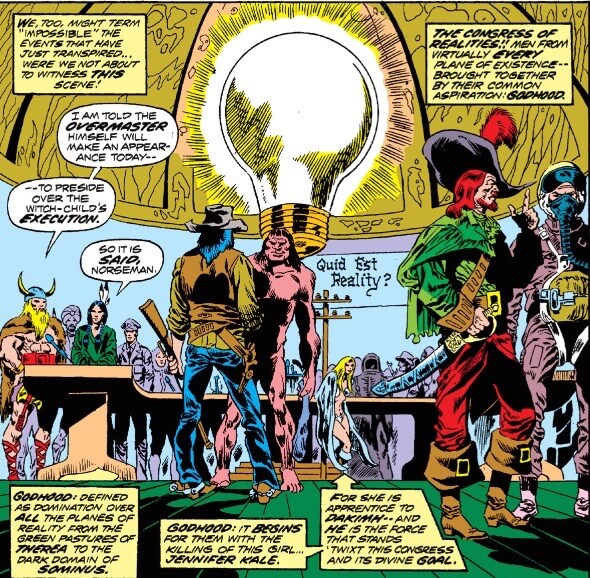
The “nexus of realities ” concept is introduced, and it solves a fundamental problem with Man-Thing: He’s stuck in a swamp. So people have to go to the swamp in order for there to be anything to write about. It was an ingenious way of avoiding relying on an ongoing ridiculous conceit that people “on accident” kept getting stuck deep in the Everglades.
I’ve often wondered if Joss Whedon borrowed from this idea when he created the Hellmouth concept to explain why there were so many monsters in Buffy the Vampire’s home town.
19. Nevada (1998) (Vertigo)

An extremely underground book about a stripper and an ostrich. Odd, dark, and troubling, it was a rare example of a “completely serious” Steve Gerber comic that still maintained an absurdist angle.
18. Man-Thing #12 (1973) (Marvel)

Steve takes on police brutality in a story that at once felt weird and remote, but also remarkably human. Art by Jim Starlin.
17. Shanna the She-Devil #1-5 (1972-1973) (Marvel)

These issues from the early 1970s are a little dated, but Shanna was one of the first women to get her own Marvel title and the issues are full of classic, Gerbesque ideas. Like Mandrill and Nekra, siblings born of a cleaning woman exposed to chemicals due to unsafe working conditions. And Shanna being an animal rights activist who wears animal skins.
16. Marvel Treasury Edition #12 (1976) (Marvel)
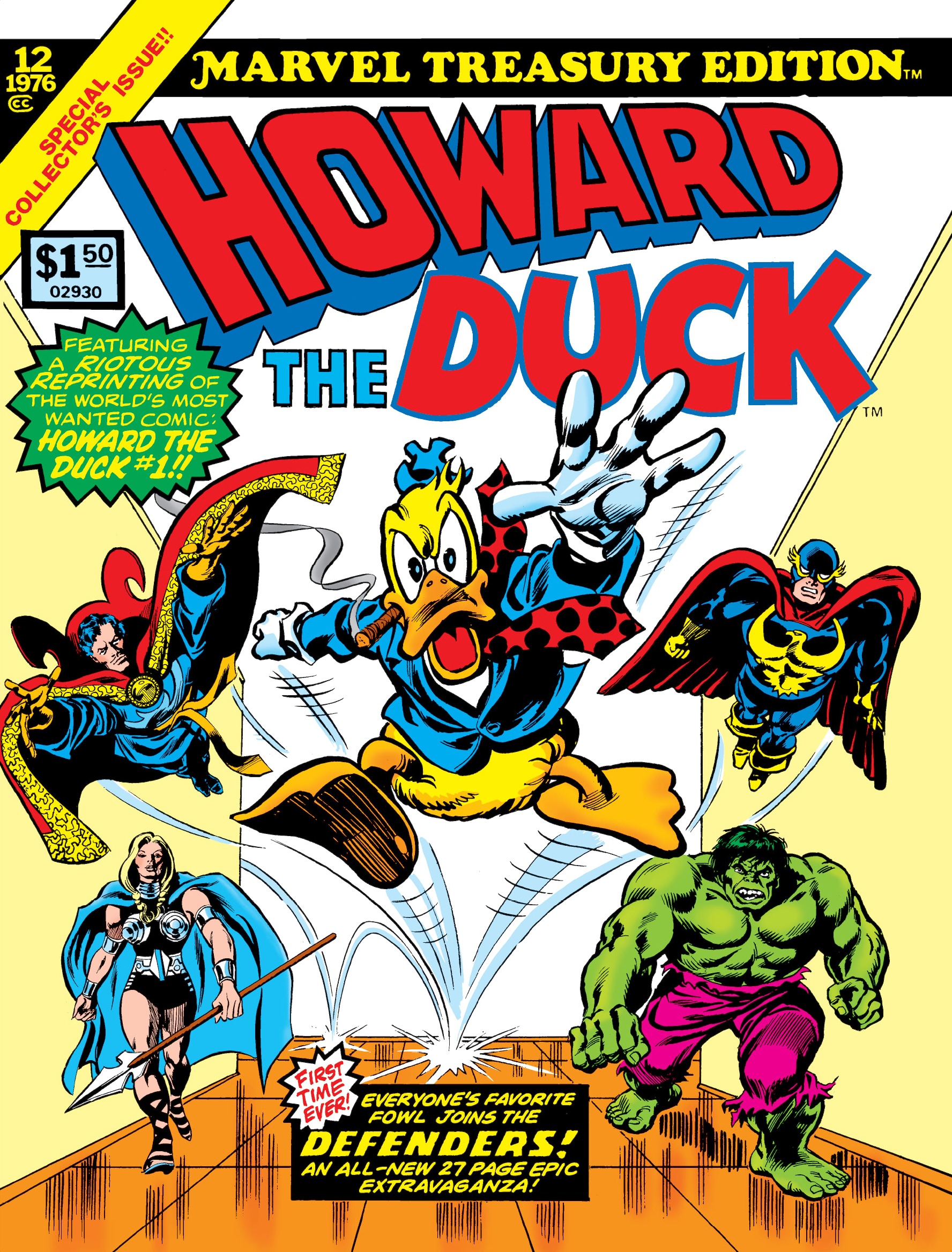
The Duck and the Defenders made us all wish for the day Howard would actually join the team.
15. Marvel Two-In-One #1-9 (1975-1976) (Marvel)

The Thing’s answer to Spider-Man’s Marvel Team Up began its run as a collection of offbeat tales featuring Man-Thing, Molecule Man, The Guardians of the Galaxy, Sub-Mariner, Daredevil, Black Widow, Ghost Rider, Dr. Strange, and a bunch of other characters. These are underrated gems especially the Christmas issue, reimagining the Wise Men and the role of a demon. And the creation of Wundarr–a version of Superman who has the mind of a child.
14. Man-Thing #22 (1975) (Marvel)

In his final issue, “Pop Goes the Cosmos,” Steve Gerber includes most of the important characters from his too-short, bizarre run with the character: Wundarr (a Superman cypher that brilliantly deconstructed the Man of Steel mythology), Howard the Duck, Foolkiller, Spider-Man, Conan the Barbarian, Thor, Hulk, Human Torch, and Steve Gerber himself. Among others. In it, Gerber reveals that he was hired by a mystical wizard named Dakhim to write the true biography of the Man-Thing, as told by Dakhim. Gerber gets transported to Man-Thing’s dimension, meets his creation, and works with him to defeatthe villainous Thog.
13. Adventure into Fear with Morbius the Living Vampire #20-24 (1974) (Marvel)

Morbius was a character adrift (literally–in space), until Steve Gerber reminded us why he was here: He’s a vampire. He eats people.
Underrated and often overlooked, this was a wonderful mash-up of the horror/superhero genres.
12. Howard the Duck #1.

The 1977 Eagle award nominee, “Howard the Barbarian.” The character had already appeared in backup features and other folks’ comics, but his hotly anticipated debut as a solo artist did not disappoint, and immediately catapulted him to cult icon status. Art by Frank Brunner.
11. The Elf With a Gun Subplot in issues of Defenders from #25-40 (1975-1976) (Marvel)

Scattered across issues over a two year timeframe were random sequences of an elf mercilessly murdering people. Gerber left Marvel before he could fully resolve this slow-boil, but the scenes he wrote were brilliant anarchy, shocking, and unprecedented.
10. The Phantom Zone #1-4 (1983) (DC).
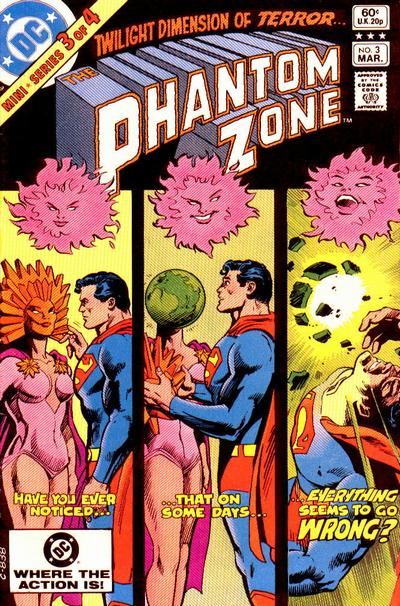
A 4-issue miniseries about Superman trapped in the PZ, featuring the JLA, General Zod, and lots of melting-clock style bizarreness drawn by Gene Colan, master of occult artistry.
9. Howard the Duck #3 (1975) (Marvel)

In issue #3 of his solo series, Howard was drawn by the legendary John Buscema in an issue that focused on “Quak-Fu.” It was such a timely, brilliant move by Steve Gerber: The year was 1977, karate movies and blacksploitation were everywhere, so Gerber made a B-movie comic book that was so good it won the Eagle Award that year.
8. The Avengers #178 (1978) (Marvel).

A done-in-one solo story of The Beast that is truly magnificent. It was nominated for a “best single issue story” Eagle Award in 1979. Art by Carmine Infantino.
7. Man-Thing #5-6 (1974) (Marvel)

Titled “Night of the Laughing Dead,” this two-parter was about a clown who kills himself in Man-Thing’s swamp. MT finds the suicide note, it moves him, and he decides to bury the dead body. Naturally, he’s spotted by other circusfolk who think Manny killed the clown. All the while, there’s some Foolkiller stuff lurking about and some ghosts haunt the clown’s survivors with memories of the clown’s life. Beautifully drawn by Mike Ploog (perfect name for a swamp artist, no?), the book exemplifies how Gerber would layer his stories with plots and subplots, and was content to have complex character development for even the most minor of players. He was also comfortable introducing elements and letting them remain unresolved at the end of an arc. In this way, he was like a “slice of life” writer who developed full lives for all of the supporting characters, but would leave those characters behind when the star of the show moved on to another adventure. Nobody, and I mean NOBODY, writes like that in comics these days. In fact, I don’t think anyone else ever did write like that.
6. Omega the Unknown #1-10 (1976-1977) (Marvel)
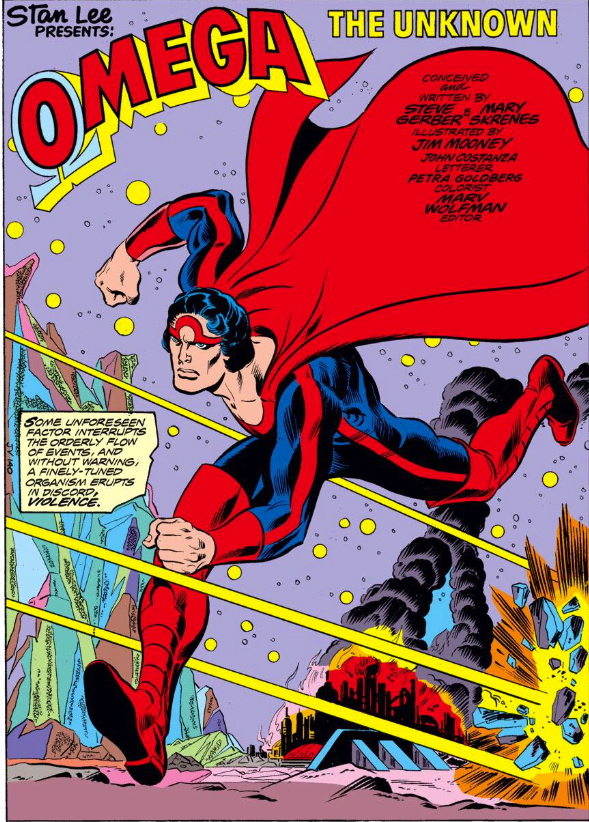
An absurdist rendition of Superman, and a series I keep coming back to year after year. It’s embarrassingly brilliant.
5. Man-Thing #3-4 (1974) (Marvel)
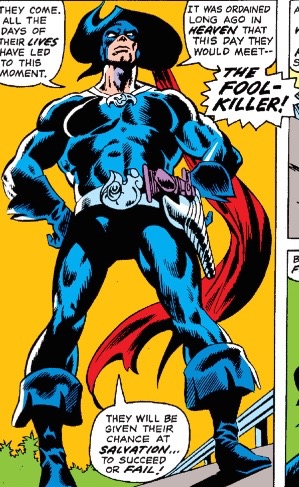
Steve introduces Foolkiller. He’s basically a Punisher of the ignorant, and often criminally ignorant.
4. Foolkiller #1-10 (1990) (Marvel)
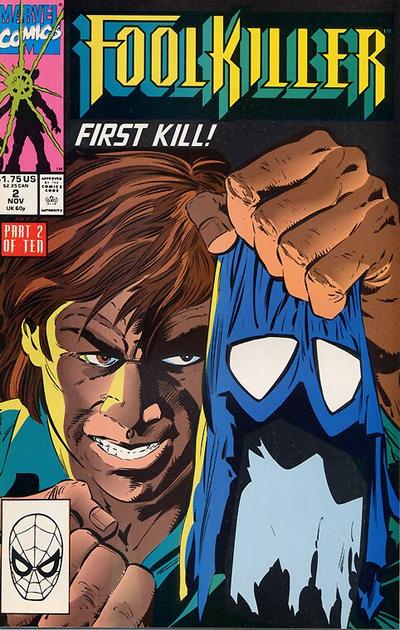
I’ll be saying this again later about “Hard Time,” but Fookiller is one of my favorite short-lived comics of all time. It’s about an imprisoned vigilante and a copycat on the outside. Coming out in the age of Son of Sam and Bernie Goetz, it was a scary look at how a person becomes a killer-with-a-cause.
Foolkiller also appeared in one of my favorite Amazing Spider-Man issues of all time, #225. He is one of the few villains I really resonated with on a personal level, because it’s my fantasy that all fools should die. He’s also the only Marvel character I ever came close to writing fan fiction about. But that’s probably just ‘cause I’m a fool…
3. The Defenders #31-40, Annual #1 (1976-1976) (Marvel)
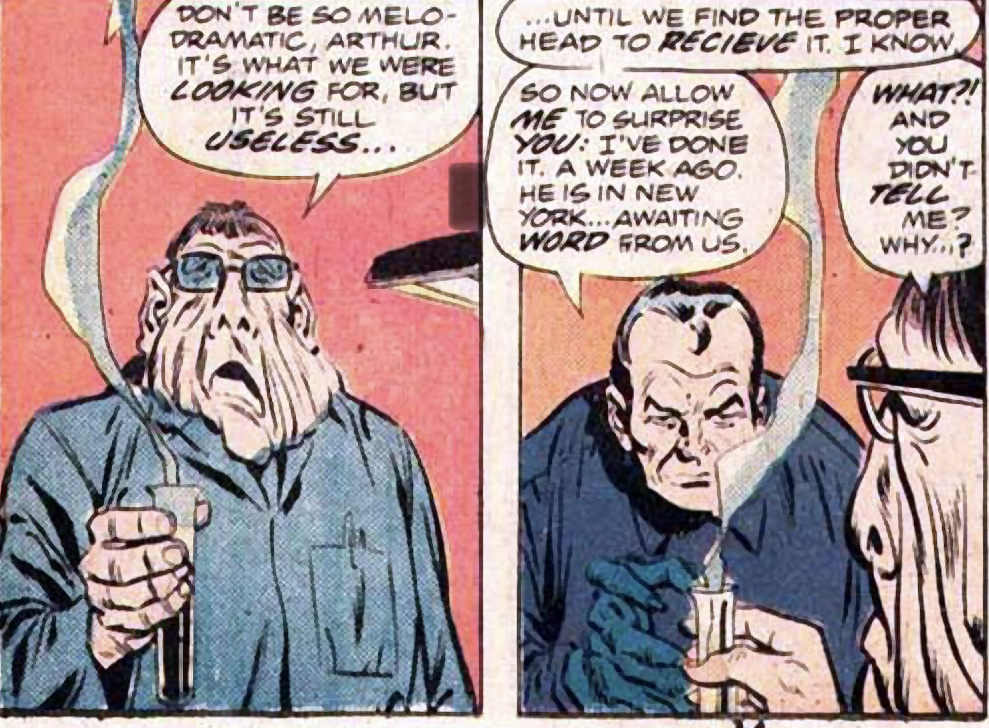
The classic, Eagle Award nominated “Headmen Saga.” It introduced some of the weirdest Marvel characters of all time, including the Godlike Nebulon and the Bozo Cult that worshipped him.
Absolutely brilliant, illustrated by the great Sal Buscema.
2. Howard the Duck #16: Zen and The Art of Comic Book Writing (1977) (Marvel)
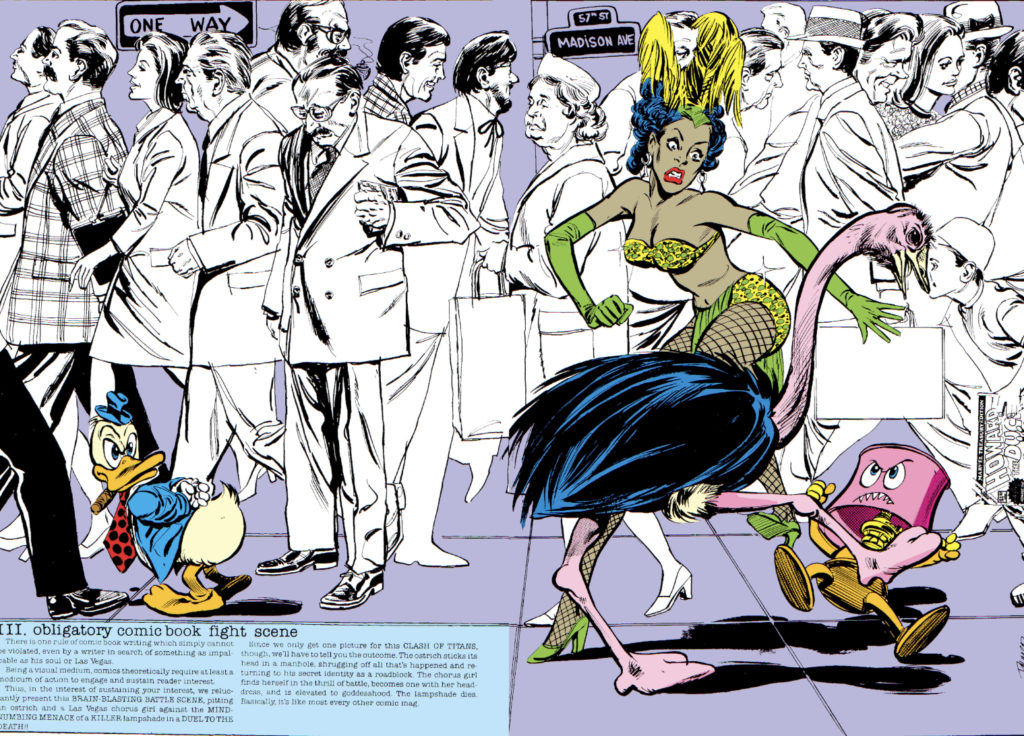
This was really a series of essays. It was truly avant garde and was nominated for an Eagle Award–it’s probably one of the single most famous comics of its time. Different artists illustrated each of the text pieces.
1. Hard Time Season 1 (2002) (DC Focus)

This, simply put, is one of my favorite comic books of all time. Unlike most of the other books on this list, Hard Time was a serious, completely non-satirical story with powerful human moments and unparalleled character work. It’s about a boy sentenced as an adult to prison for a murder that he committed by accident—partly as a result of having a superpower that he doesn’t understand and can’t control. The comic told two stories: One, how a boy gets hardened as a result of doing hard time; and two, how he discovers his super-potential. Only season 1 is available in trade. Damn, damn shame. This was part of DC’s short-lived predecessor to Vertigo, “DC Focus.”

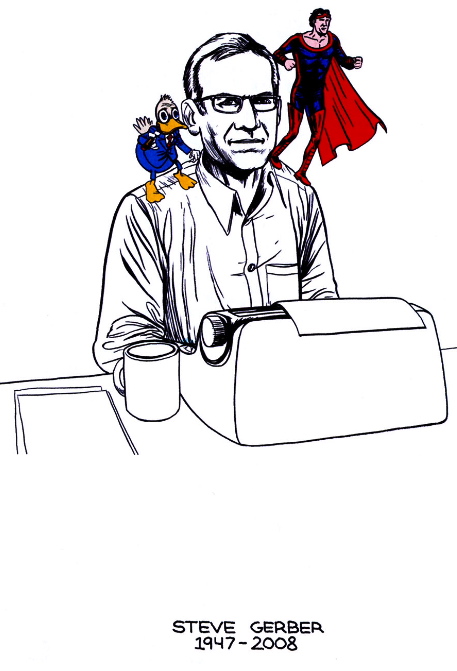
I hate Howard the Duck. He’s trite, banal, and trivializes everything about the comics medium that I love. I don’t care if a lot of people consider the concept as an avant-garde take on social commentary. I just don’t get it, and don’t really care to. I love the Man-Thing. He’s big, ugly, has every reason to hate the world, and yet, all he does is slosh around the swamp trying to help people in trouble. He can also take down pretty much everything and everybody out there, and does so with no exertion whatsoever. The Hulk, the Thing, Shang-Chi, Kung-Fu Dude- no sweat. His big, red eyes never close on a world that needs him, even though it truly sucks to be him. A true hero off the classic mold. Steve Gerber’s first nine issues of ‘Marvel Two-In-One’ are nine of the most memorable comic books Marvel has ever published, including the celebrated Christmas issue with the Ghost Rider, the perfect Marvel Comic with the Sub-Mariner, Namorita, ( the Sub-Mariness-? ) and Wundarr, and, of course, Ben Grimm’s hilarious attempt to humiliate the Man-Thing. The enjoyable “Black Spectre” crossover with Daredevil, which features DD’s near-death after falling off the Baxter Building when one of Mr. Fantastic’s experiments blows him off his billy-club cable. The underrated and overlooked “Phantom Zone” miniseries, essentially telling the story of “Superman II” from the viewpoint of regular DC continuity- I would say that the only Gerber comics relevant that are missing from this list are ‘Daredevil’#110, which gave us the heartbreaking origins of the Mandrill and Nekra, who, like the Mole Man, were not born as bad people, but were driven into supervillainy by a world that is horribly cruel to unfortunate people who are born ugly and with severe deformities. Finally, ‘The Defenders’#22-25- Gerber’s statement piece on race-relations in the USA. That run would have perfect if only he’d skipped that stupid “Elf with a Gun” nonsense, which served no purpose at all whatsoever, except to make his readership wonder what kinds of drugs he’s taking. No point to it at all. Finally- I never thought about it before, but why IS Shanna the She-Devil ( I’m sure she’s actually a lovely person ) running around in ANIMAL SKINS, when she’s supposed to be the champion of animal rights??? Holy hypocrisy, Batman!! I always had Ms. She-Devil figured as a sort-of straight-up version of Mrs. ‘George of the Jungle’, Ursula. Ha-ha! The Gerber Saga unfortunately came to a sad, tragic end in 2008 when the man died all alone in a Las Vegas hospital from a relatively rare respiratory illness while awaiting a lung transplant, totally estranged from Marvel Comics following all the legal acrimony concerning who really owned the legal rights to his ‘Howard the Duck’ character. ( Gerber lost- insult to injury, as he lay dying, all alone ) A sad, unfit ending to a life that gave us all so much. RIP, Steve Gerber.